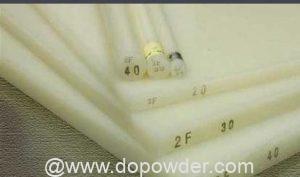What is High Density Polyethylene

High density polyethylene (HDPE), white powder or granular product. Non-toxic, tasteless, crystallinity of 80% to 90%, softening point of 125 to 135°C, use temperature up to 100°C; hardness, tensile strength and ductility are better than low density polyethylene; wear resistance, electrical Good insulation, toughness and cold resistance; good chemical stability, insoluble in any organic solvent at room temperature, corrosion resistance of acid, alkali and various salts; thin film permeability to water vapor and air, water absorption Low; poor aging resistance, environmental stress cracking resistance is not as good as low density polyethylene, especially thermal oxidation will reduce its performance, so antioxidants and ultraviolet absorbers must be added to the resin to improve this deficiency. High-density polyethylene film has a low heat distortion temperature under stress, so pay attention to it when applying it.
[English name] High Density Polyethylene[English abbreviation] HDPE
[Common name] Low pressure ethylene
[Composition monomer] Ethylene [Basic characteristics] HDPE is an opaque white wax-like material with a specific gravity lighter than water, with a specific gravity of 0.941~0.960. It is soft and tough, but slightly harder than LDPE, and also slightly stretchable, non-toxic and tasteless. [Combustion characteristics] It is flammable and can continue to burn after leaving the fire. The upper end of the flame is yellow and the lower end is blue. When burning, it will melt, there will be liquid dripping, and no black smoke will emerge. At the same time, it emits the smell of paraffin burning. [Main advantages] Acid and alkali resistance, organic solvent resistance, excellent electrical insulation, and can still maintain a certain toughness at low temperature. Surface hardness, tensile strength, rigidity and other mechanical strengths are higher than LDPE, close to PP, tougher than PP, but the surface finish is not as good as PP. [Main disadvantages] Poor mechanical properties, poor ventilation, easy deformation, easy aging, easy to become brittle, less brittle than PP, easy to stress cracking, low surface hardness, easy to scratch. Difficult to print, when printing, surface discharge treatment is required, no electroplating, and the surface is dull. [Applications] Used for extrusion packaging films, ropes, woven bags, fishing nets, water pipes; injection molding of low-grade daily necessities and shells, non-load-bearing components, plastic boxes, turnover boxes; extrusion blow molding containers, hollow products, bottles.
